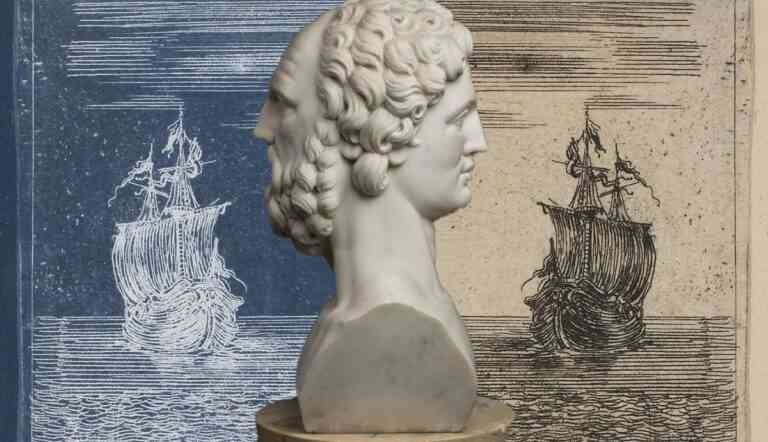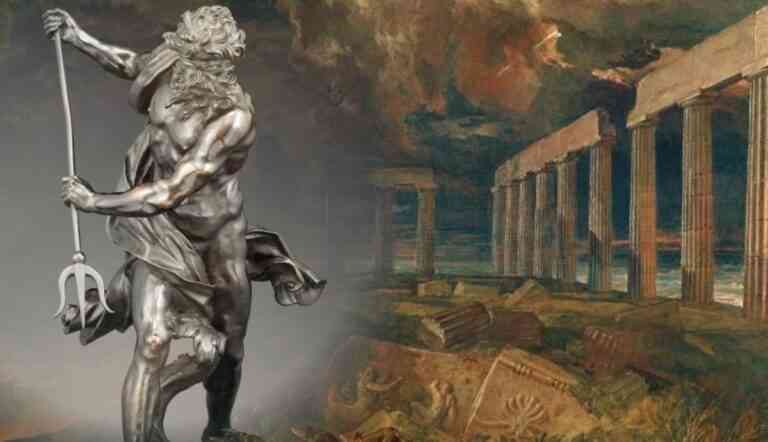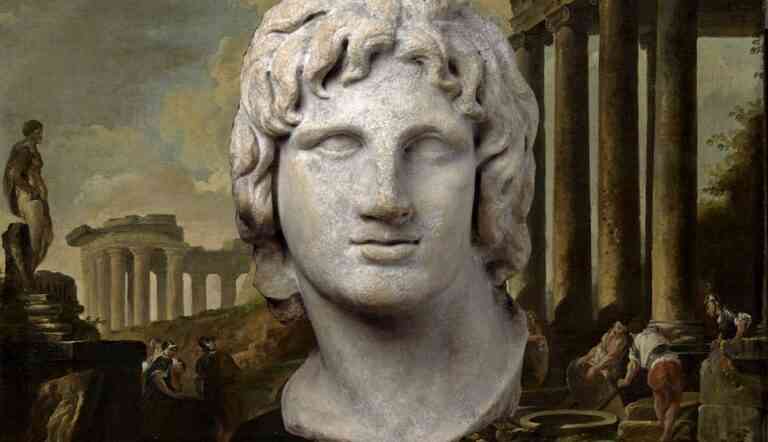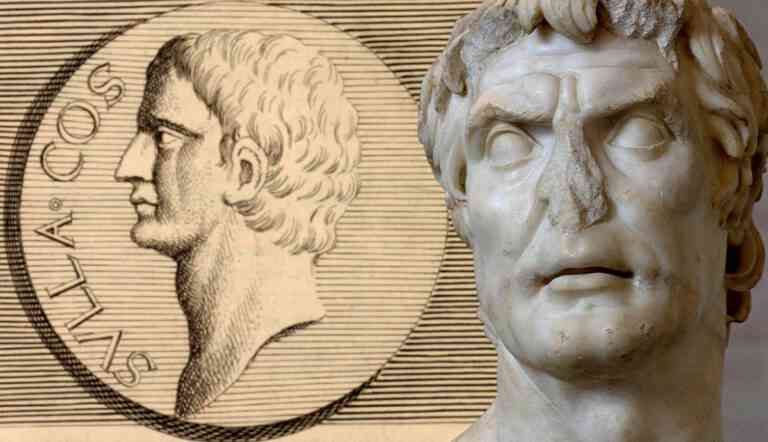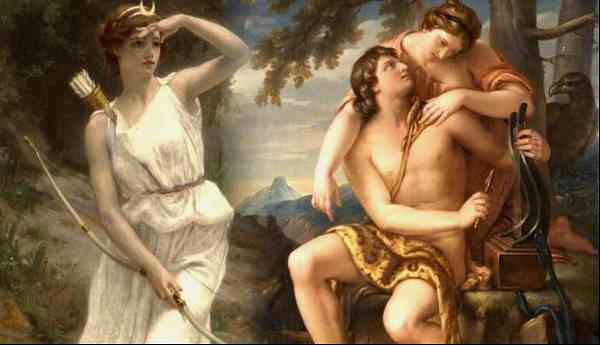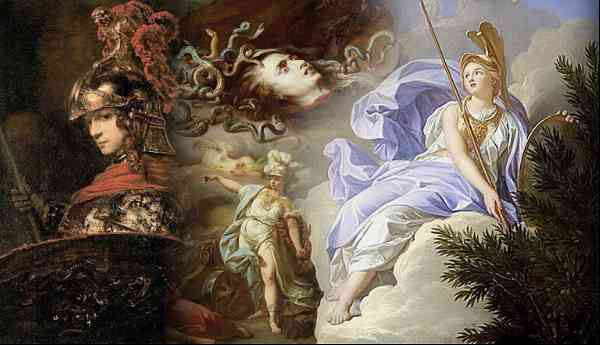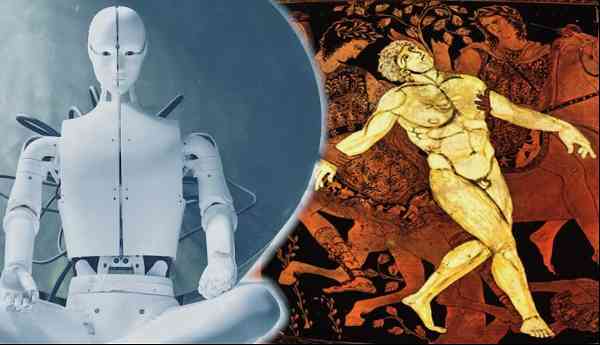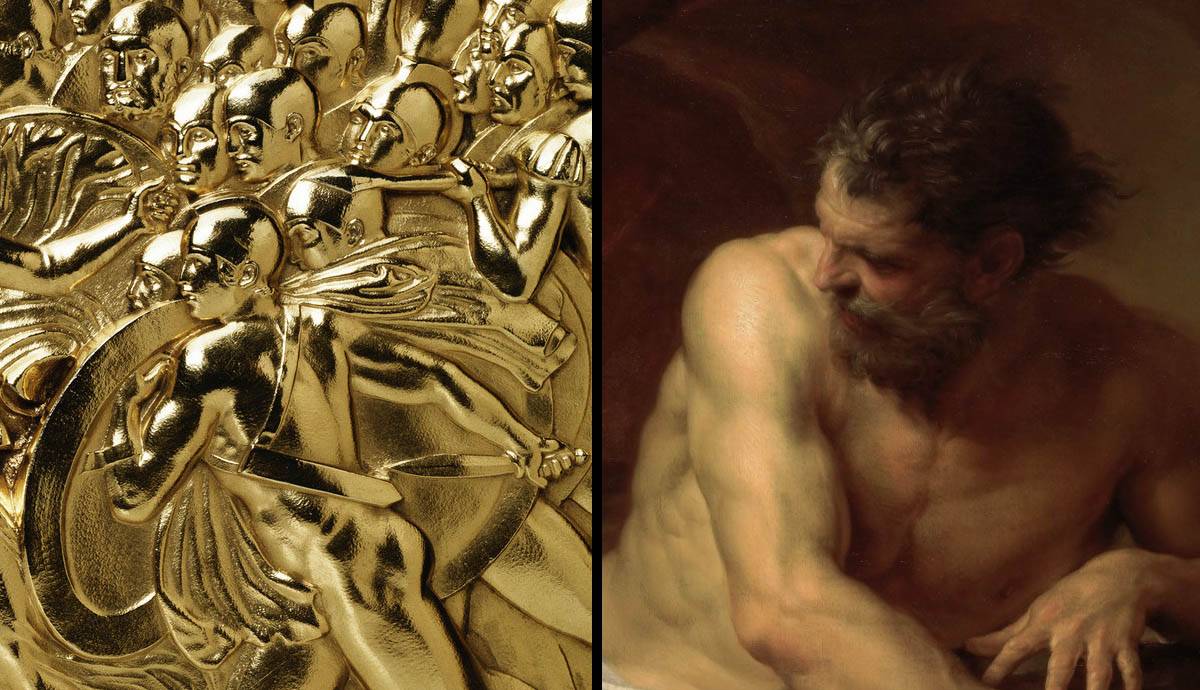
In Greek mythology, the gods were an exalted, elite group. But even within the group, gods could feel like outsiders. Hephaestus, the Greek god of the forge, fire, and craft, was one of them.
Unlike the other gods, Hephaestus’ form was not perfect. As a child, he was thrown from Olympus because he was “ugly”, but the damage from the fall disfigured Hephaestus even further. He was left irreparably crippled, and his disability was often the unjustified basis for his rejection by the other gods, including his wife, Aphrodite.
So, who was Hephaestus? What are his myths? What magnificent creations did he make for the other gods? Read on to discover more.
Hephaestus: Handy With a Hammer

Hephaestus had a great gift: he could craft anything imaginable. He was the god of fire, the forge, craft, and creation. Without him, the gods would not even have their greatest symbols of power. Zeus, king of the gods, would not have the mighty lightning bolt. Apollo and Artemis, divine twins, would not have their spectacular archery sets. Athena, goddess of wisdom and war, would not have her infamous spear. Hermes, god of travelers, would not have his winged helmet and sandals that gave him the power to be so fleet of foot.
Hephaestus was also the manager of the Forge of the Cyclopes. This is usually depicted as being inside a volcano, where the hot lava was used. Under his direction, the Cyclopes created even more wonders for the gods. This included the petrifying shield, named Aegis, which Zeus and Athena took turns in using. This shield had the face of a gorgon — some say Medusa, the immortal Gorgon herself — implanted in the center. To gaze upon the eyes would strike fear into the hearts of the enemy, and they would flee.
Get the latest articles delivered to your inbox
Sign up to our Free Weekly Newsletter
Creations from the hands of the god included armor and weaponry for heroes, palaces for kings, homes for gods, and statues so lifelike they appeared real — automatons which were basically primitive robots shaped like men. The creations of Hephaestus were marvelous, and he gained the titles Polymêtis “ingenious / of many crafts,” Klytomêtis “famed for skill,” and Aithaloeis Theos “the sooty god.”
The Shield and Armor of Achilles
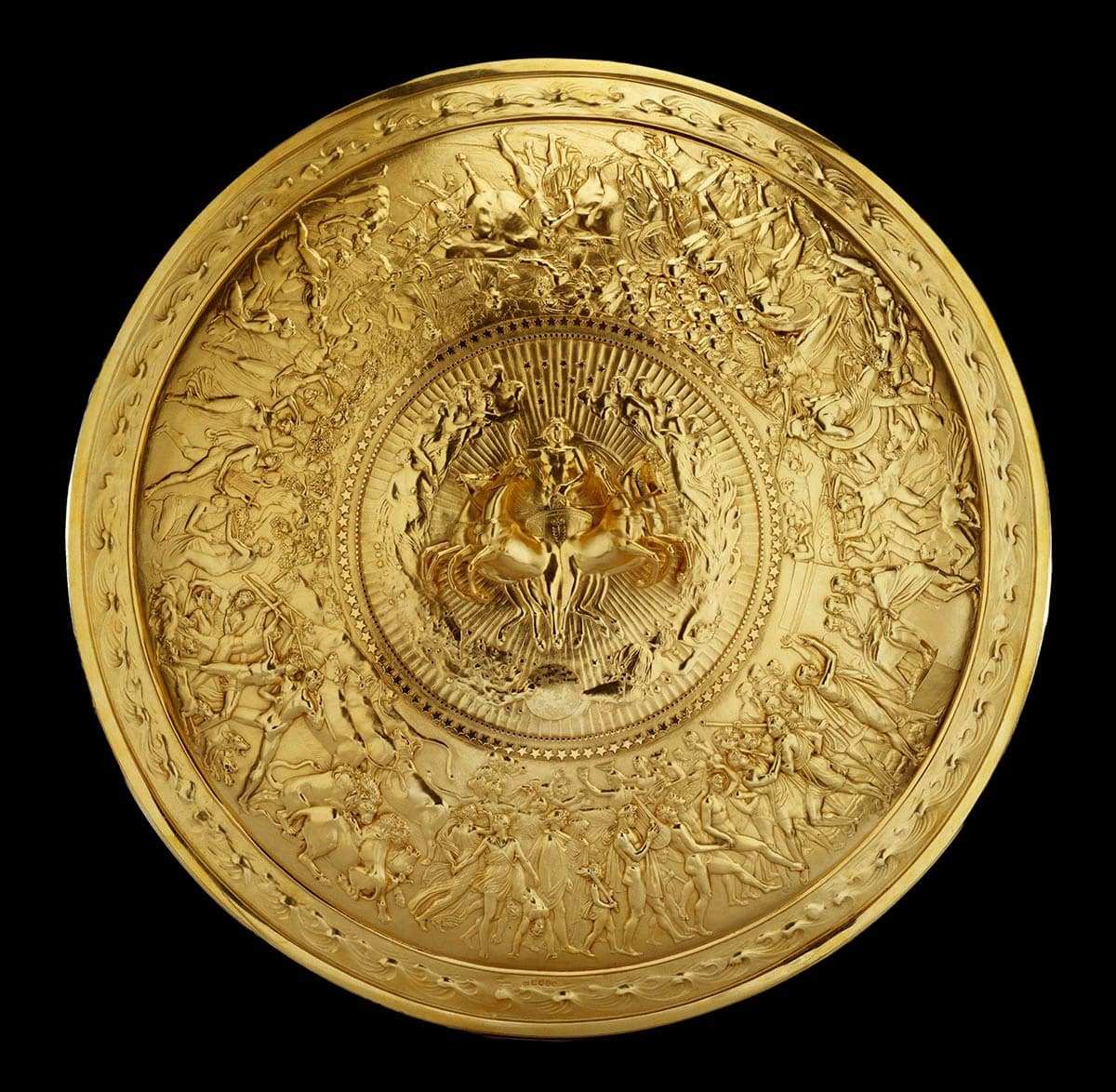
Another famous piece wrought by Hephaestus was the shield and armor of Achilles. Achilles was a mortal hero who fought in the Trojan War for the Greeks. He was such a formidable fighter that he was named “best of the Achaeans (Greeks)”.
Hephaestus was beseeched by Thetis, the mother of Achilles, to create for her son the most splendid armor, better than any that had been made before. This creation was before its time; artists’ descriptions of the shield appear to describe a moving image on the shield’s surface. Moving pictures or animation, an invention that would come thousands of years later.
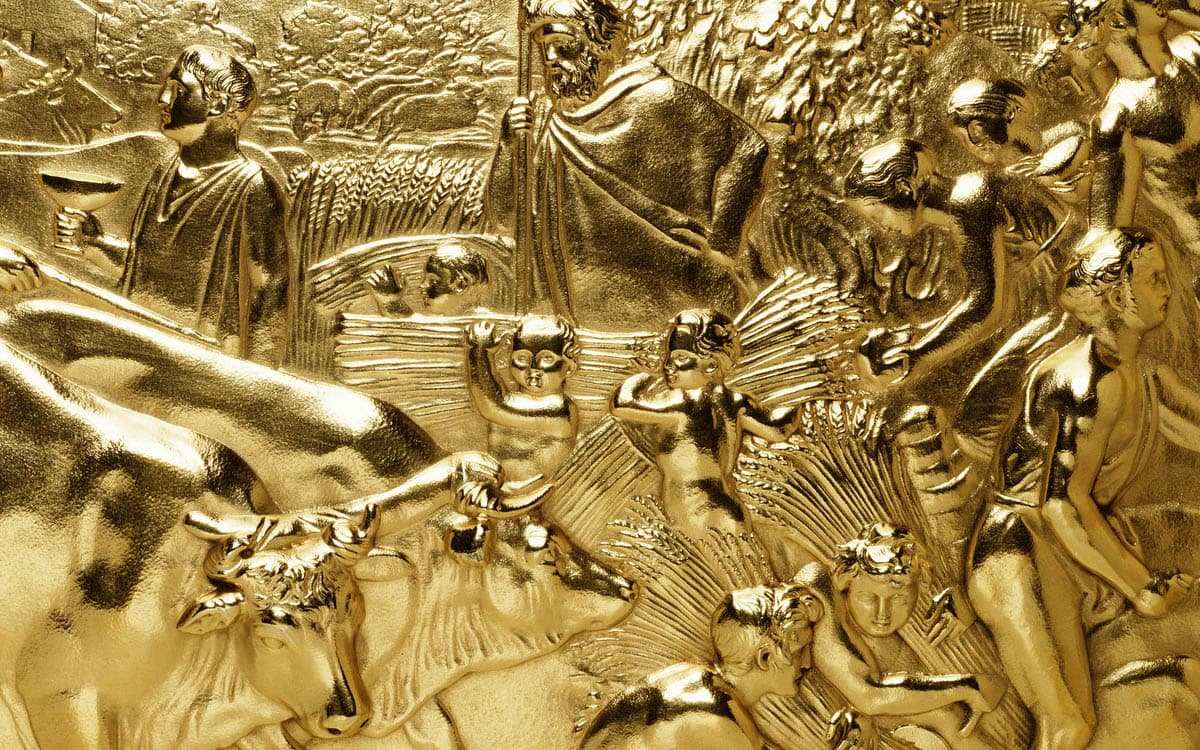
“And first Hephaestus makes a great and massive shield, …There he made the earth and there the sky and the sea and the inexhaustible blazing sun and the moon rounding full and there, the constellations, …And he forged on the shield two noble cities filled with mortal men. With weddings and wedding feasts in one …But circling the other city camped a divided army gleaming in battle-gear.”
(Homer, Iliad, Book 18 558-594)
The images on the shield illustrated the varying aspects of life and the world as the ancient Greeks knew it: war and peace, civilization and wilderness, creation and chaos, and so on. In Roman mythology, Virgil wrote a similar scene in the Aeneid; Hephaestus creates wondrous armor for Aeneas, son of Venus.
Hephaestus and Thetis’ Friendship
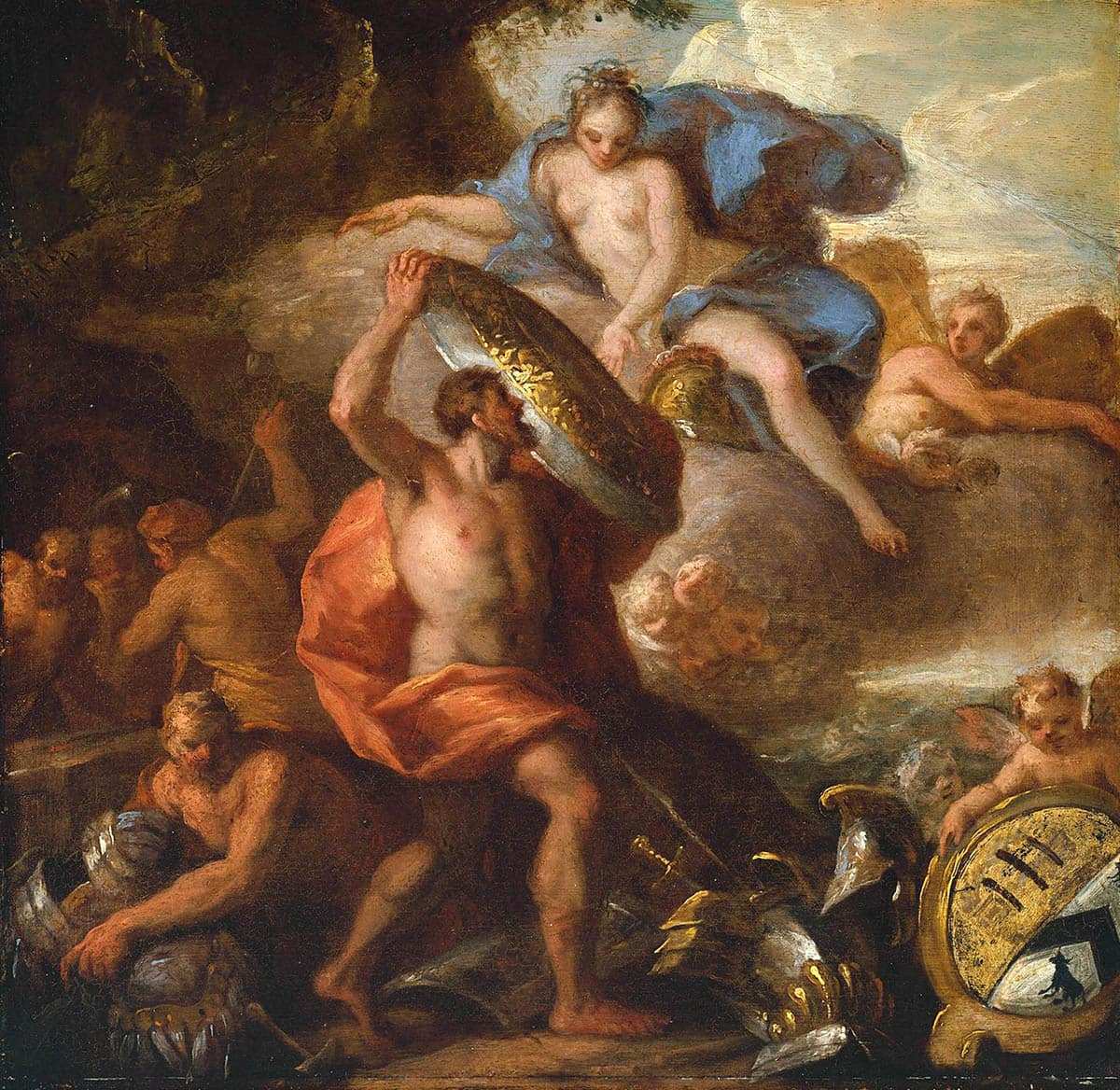
Hephaestus had agreed to Thetis’ request for the armor because she had been kind to him when others had turned their back on him, specifically his own mother, Hera. When Hephaestus was born, Hera threw him from Olympus because he had a deformity.
Hephaestus tells his wife the story in the Iliad:
“She [Thetis] saved me when I suffered much at the time of my great fall through the will of my own brazen-faced mother, who wanted to hide me for being lame. Then my soul would have taken much suffering had not Eurynome and Thetis caught me and held me, […] With them I worked nine years as a smith, and wrought many intricate things; pins that bend back, curved clasps, cups, necklaces, working there in the hollow of the cave, […] No other among the gods or among mortal men knew about us except Eurynome and Thetis. They knew since they saved me.”
(Homer, Iliad, Book 18.136)
This passage exposes the loneliness of Hephaestus, who was hurt by his mother’s rejection. He remained alone, without the other gods, working on his creations. Only the occasional visits from Eurynome and Thetis would alleviate his isolation.
What Did Hephaestus Look Like?
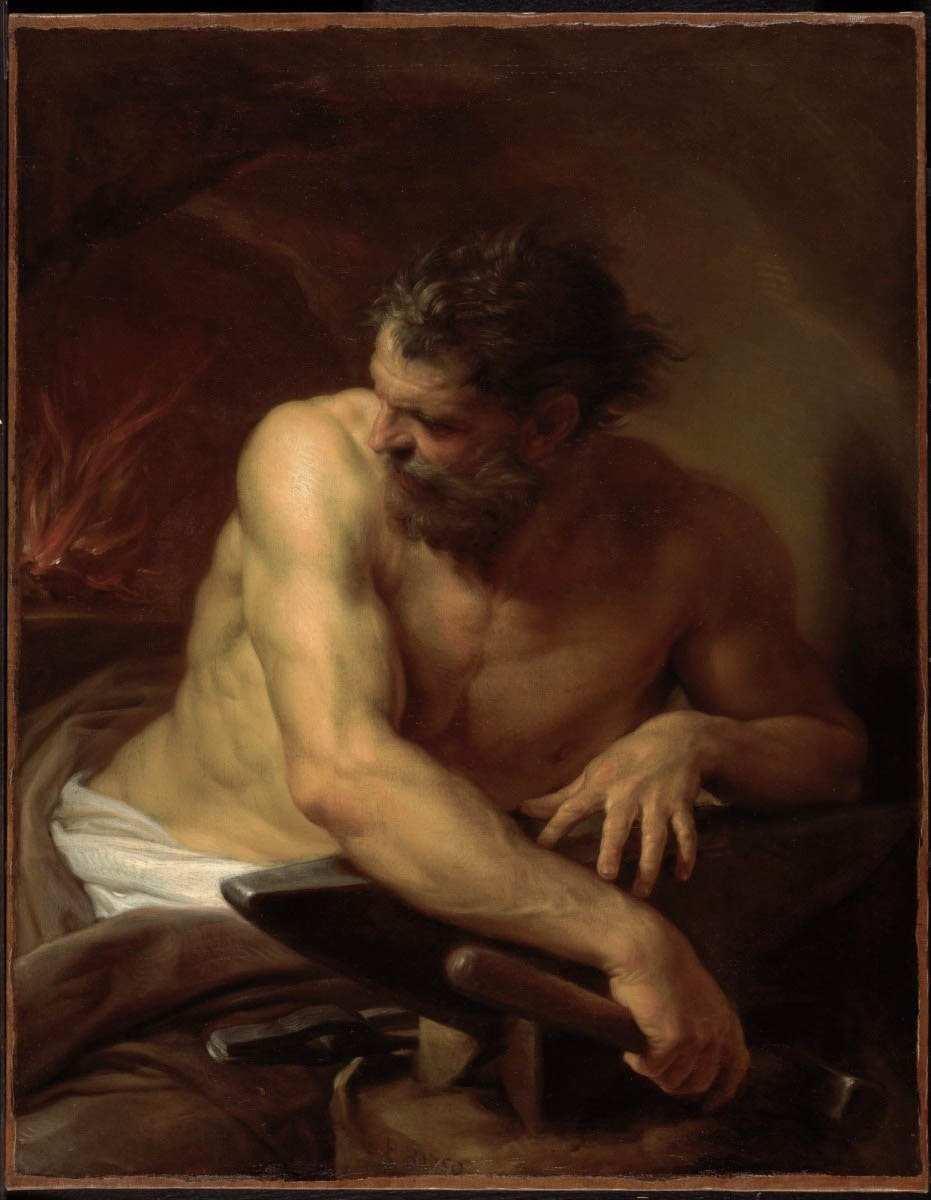
So what did Hephaestus look like? And what happened in that myth when he was born?
Hera, Queen of Heaven, Goddess of Marriage, and Hephaestus’ mother, was enraged when Zeus birthed Athena on his own, without Hera. Determined to produce a child without the help of Zeus, Hera impregnated herself. The sources are unclear how this happened; some say with herbs, some say with sheer willpower as a powerful goddess. When Hephaestus was born, he had a deformity. There are different interpretations of what this deformity was, some say it was a crippled foot, another an odd-shaped head, others a humped back. In any case, Hera believed he did not fit with her family’s perfect image.
In one adaptation of the myth, Hera says, “My son Hephaistos whom I bare was weakly among all the blessed gods and shriveled of foot, a shame and a disgrace to me in heaven [Mount Olympus], whom I myself took in my hands and cast out so that he fell in the great sea. But silver-shod Thetis the daughter of Nereus took and cared for him with her sisters: would that she had done other service to the blessed gods!” (Homeric Hymn 3 to Pythian Apollo 310)
It is noteworthy that in ancient Greek society, it is believed that some city-states would throw unhealthy or deformed children from mountains. In particular, Greeks in ancient Sparta were said to have done this, as they wished to cultivate the “strongest” race, with no “weak links”. However, Spartans did not tend to write their own histories, and so this should not be readily believed.
In artwork, Hephaestus is often depicted with an unruly beard and sometimes long hair under a blacksmith’s cap. He is usually accompanied by his tools, commonly a pair of tongs, an anvil, and a hammer.
Romantic Endeavours: Aphrodite, Athena, and Kharis
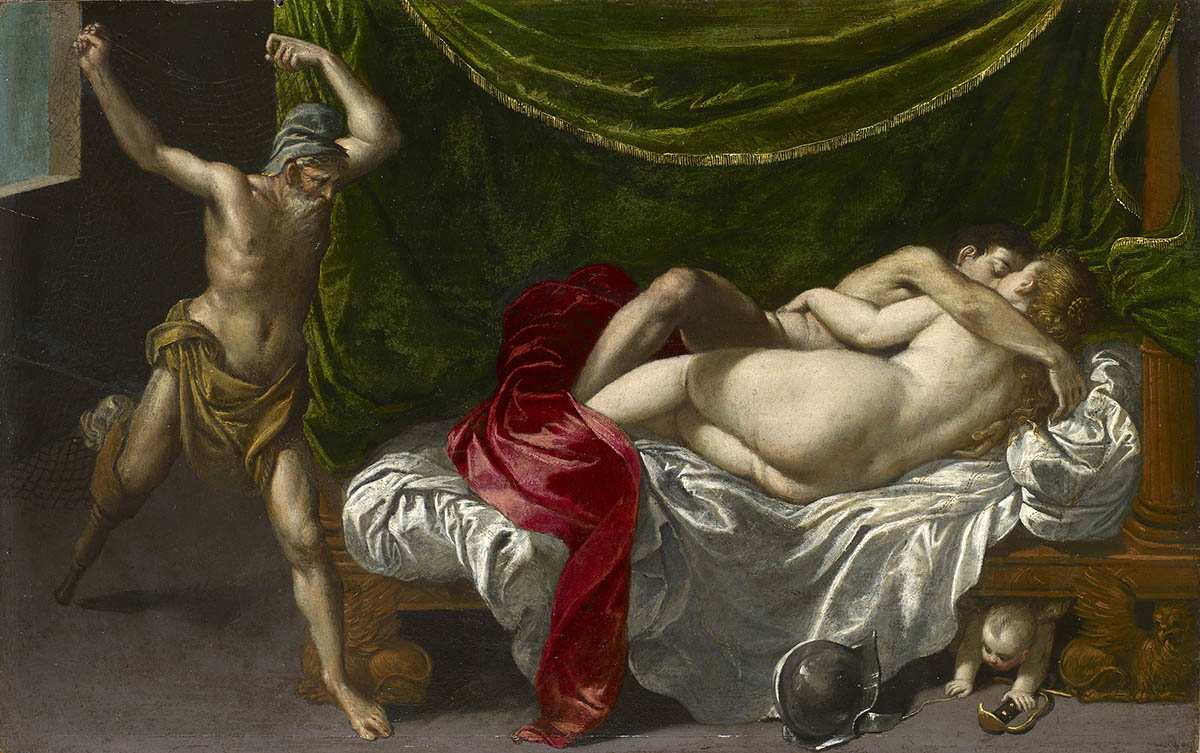
After having been thrown from Olympus, Hephaestus later made his comeback. With a carefully crafted plan in mind, he set to work to both get revenge on Hera and win the beautiful Aphrodite’s hand in marriage.
Hephaestus, much like many others, had fallen for the charms and beauty of Aphrodite, and so he wished to have her as his wife. Rather than ask Aphrodite’s father Zeus outright for Aphrodite’s hand, for fear of rejection, Hephaestus instead captured his mother, Hera, and demanded Aphrodite in return for Hera’s release.
Zeus begrudgingly agreed, and so Aphrodite was married off to Hephaestus. Unsurprisingly, Aphrodite was not happy about this trickery, as she had been dating Ares, God of War. This led to a very unhappy marriage with many affairs. Eventually, Hephaestus divorced Aphrodite.

Hephaestus also admired Athena, and he believed that they had a connection due to their shared interest in craft and creation. However, Athena was a maiden goddess, and as such, had vowed never to have sex. When Hephaestus made advances, she rejected him.
Hephaestus pursued many women, but to no avail. Eventually, in some myths, Hephaestus managed to find a happy and fulfilling romance with Kharis, also known as Aglaea. Kharis was one of the three Charites, and so she was a goddess of splendor, glory, and adornment. Together they had many daughters.
Hephaestus the Lonely Inventor
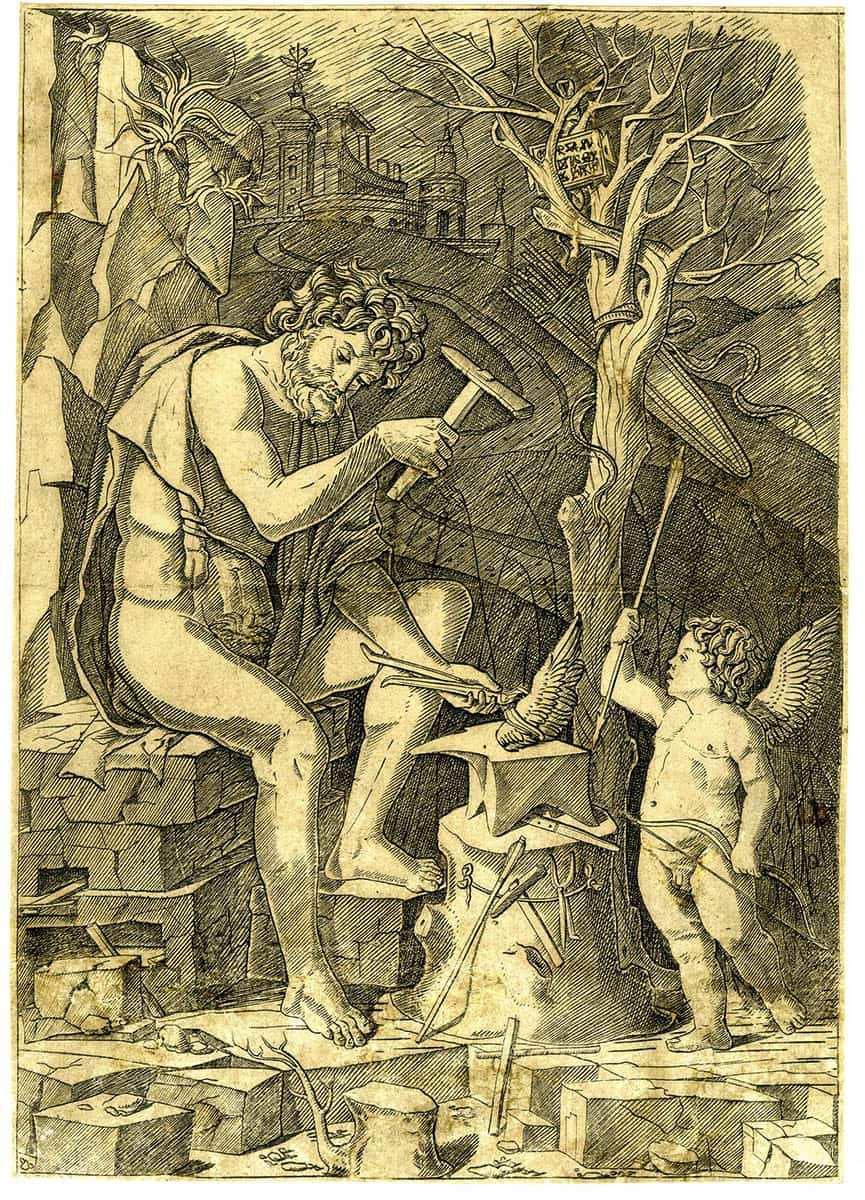
Hephaestus was often unappreciated and devalued in comparison to his other divine relatives. While his appearance was not perfect like the other gods, his skills were not to be misjudged. His power and expertise to create things of wonder could be both awe-inspiring and terrifying. According to Greek myth, the human race owes its very creation to him.
“And Zeus who thunders on high was stung in spirit . . . and he made an evil thing for men as the price of fire; for the very famous Amphigueeis (Limping God a.k.a Hephaestus) formed of earth the likeness of a shy maiden as the son of Kronos (Zeus) willed. And the goddess bright-eyed Athene girded and clothed her with silvery raiment, and down from her head she spread with her hands an embroidered veil.”
Hephaestus did not let his position as an outsider hinder his potential. He worked day and night on his craft and made himself indispensable to his fellow divinities. In the end, the myths show that without Hephaestus and his crafts, the gods would hardly have been superior to humankind at all. Hephaestus’ gifts enabled the elevation of the gods, and his gifts to humankind bestowed valuable and priceless favor.

